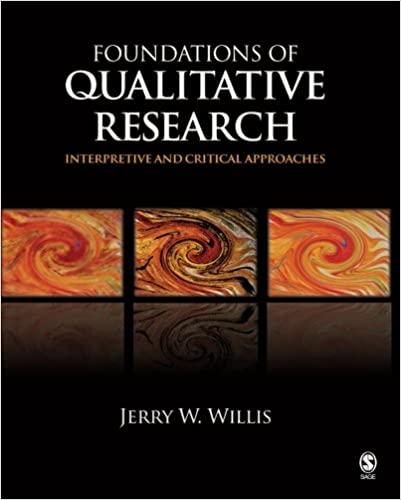Question
Brenda , a seasoned online counsellor , is providing live online video counselling to Carlos , a forty - year - old construction worker .
Brenda, a seasoned online counsellor, is providing live online video counselling to Carlos, a forty-year-old construction worker. Carlos is married with three teenage children. While counselling Carlos, Brenda often sees other family members milling about in the background. When Brenda brings this up with Carlos in session, he says that in his culture personal information is shared with all family members. In Carlos' words, "we keep no secrets".
Step One: A.What are the key ethical issues in this situation? Counsellors determine the type of problem or ethical dilemma. They then collect information about the problem, identify primary concerns/conflicts, and consider potential responsibilities. In the casebook, authors have suggested that the students describe parameters, define potential issues, or determine the type of ethical dilemma.
Step Two: A.What ethical articles from the CCPA Code of Ethics are relevant to this situation? B.Are there policies, case law, statutes, regulations, bylaws or other related articles that are relevant to this situation? Provide related articles from CCPA (Code of Ethics) in relation to the presented case scenario. Review the CCPA Code of Ethics to see if ethical articles (e.g., confidentiality or record keeping) are appropriate for your particular situation. For this step, focus on using the Standards of Practice.
Step Three: A.Which of the six ethical principles are of major importance in this situation? This step also involves securing additional information and examining the probable outcomes of various courses of action. Examine moral and ethical principles that are relevant and important to the situation. These principles are: a) autonomy - allowing clients the freedom to make informed decisions and to plan their own action b) nonmaleficence - doing no harm c) beneficence - doing good d) justice - acting fairly e) fidelity - upholding the clients trust Step Four: A.How can the relevant ethical articles be applied in this circumstance? B.How might any conflict between ethical principles be resolved? C.What are the potential risks and benefits of this application and resolution? Choose the most important principles and relevant ethical articles and start implementing some possible actions by: a) Generating alternatives and examining the risks and benefits of each, b) Securing additional information, and c) Examining probable results of various courses of action. Step Five: A.What would the counsellor's feelings and intuitions tell them to do in this situation? (See also Virtue-Based Ethical Decision-Making) Up to this point, decision making was mainly cognitive and rational. In this step, the task is to use emotional decision-making techniques. At this stage, counsellors can add some elements of virtue ethics, especially considering all the options below that can best help and show respect for the client. Consider the emotional response to the dilemma and answer these questions: 1. What emotions and intuition am I aware of as I consider this ethical dilemma, and what are they telling me to do? 2. How can my values best show caring for the client in this situation? 3. How will my decision affect other relevant individuals in this ethical dilemma? 4. What decision would I feel best about publicizing? 5. What decision would best define who I am as a person? Step Six: A.What plan of action will be most helpful in this situation? B.Follow up to evaluate the appropriateness, adequacy, and effectiveness of the course of action taken. Identify any adjustments necessary to optimize the outcome. Counsellors should consider the breadth and depth of possibilities. What are all the different ways that the situation might be handled? How feasible is each possibility? Identify and follow the specific action plan, evaluate it, and provide the rationale for how to adjust any negative or neutral consequences that may occur as a result of your actions.
Step by Step Solution
There are 3 Steps involved in it
Step: 1

Get Instant Access to Expert-Tailored Solutions
See step-by-step solutions with expert insights and AI powered tools for academic success
Step: 2

Step: 3

Ace Your Homework with AI
Get the answers you need in no time with our AI-driven, step-by-step assistance
Get Started


